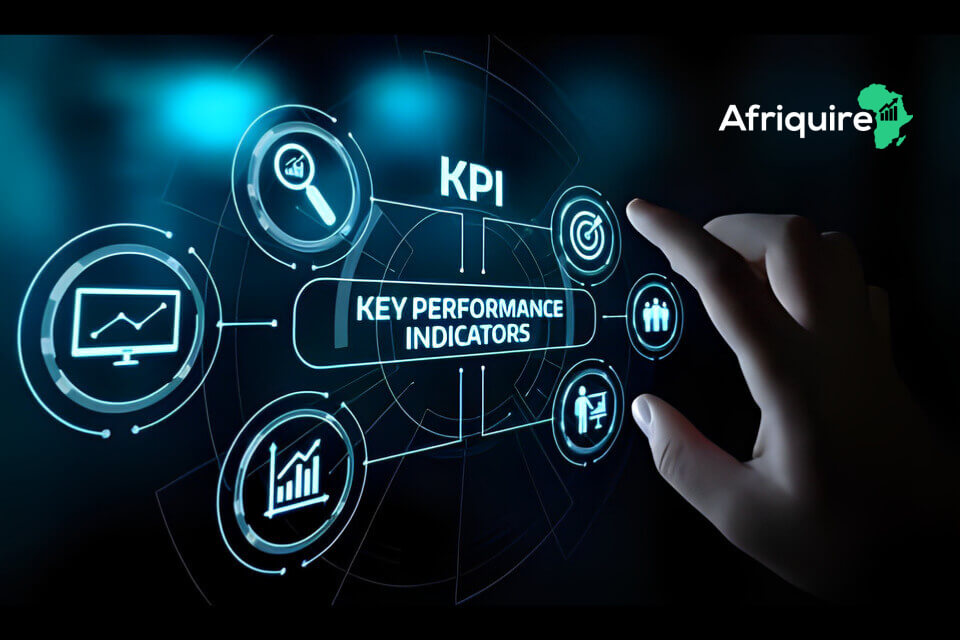Introduction
Investing in the stock market can be daunting, especially for those new to stock Investing. However, African investors can make informed decisions and build a strong portfolio by understanding and utilizing key stock investing metrics. In this article, we’ll list some essential metrics that every value investor must follow.
What is Value Investing
Value investing is a strategy that involves identifying undervalued stocks and holding them for the long term. It’s about finding stocks trading below their intrinsic value, providing investors with the opportunity for significant returns over time.
Imagine you’re at a garage sale and spot a vintage book the seller hasn’t realized is worth a lot. They’re selling it for just a few dollars. This book is a rare collector’s item and could be worth hundreds or thousands of dollars to the right person. Value investing is like that garage sale scenario but in stock investing. Here’s how it works:
Finding Hidden Gems
Value investors are like savvy shoppers. They search for stocks (pieces of companies) that they believe are being sold for less than what they’re truly worth. These stocks are like hidden gems waiting to be discovered.
Long-Term Focus
Value investors aren’t looking for quick profits. They plan to hold onto these undervalued stocks for long, often years. This is because they believe that over time, the actual value of these stocks will become apparent to others, and their prices will rise.
Intrinsic Value
The “intrinsic value” of a stock is what it’s worth based on factors like the company’s assets, profits, and potential for growth. Value investors try to estimate this intrinsic value, and if they think a stock is selling for less than that, they consider it a good deal.
Patient Investors
Value investors need patience. Sometimes, it takes a while for the stock market to realize the actual value of a company. It’s like waiting for others to notice that rare book’s true worth.
So, in simple terms, value investing is about being a wise and patient investor. It’s about finding stocks sold for less than they’re worth, buying them, and holding onto them for the long haul, hoping their value will eventually become clear to everyone. If done wisely, it’s a strategy that can lead to significant returns over time.

Understanding Key Stock Investing Metrics in Everyday Language
Imagine you’re shopping for a new phone and want to ensure you’re getting a great deal. You start by looking at a few essential details about each phone. These stock Investing metrics are similar to looking at a phone specification and determining if it’s a great deal. It’s similar to how you will use these metrics to determine if the stock you are about to purchase is a good deal. Let’s look into these metrics;
Price-to-Earnings Ratio (P/E Ratio)
What It Is: Think of this like checking the price tag of a phone. The P/E ratio is like the price tag for a stock. It tells you how much you’re paying for each company’s profit.
How to Calculate Price-to-Earnings Ratio (P/E Ratio): To find the P/E ratio, you divide the current price of a share of the company’s stock by how much profit each share makes. It’s like dividing the cost of a phone by what it can do.
Why It Matters: If the P/E ratio is low, the stock might be a good deal, like getting a powerful phone for a low price. But it might not be a great deal if it’s high, like paying a lot for a phone with fewer features.
Price-to-Book Ratio (P/B Ratio)
What It Is: Imagine you’re buying a used car. The P/B ratio is like checking the car’s value compared to its price. It tells you if you’re getting a good deal based on the car’s worth.
How to Calculate Price-to-Book Ratio (P/B Ratio): To find the P/B ratio, you divide the current price of a share of the company’s stock by the value of the company’s assets after removing its debts. It’s like seeing if you’re paying a fair price for a car, given its condition.
Why It Matters: If the P/B ratio is below 1, it might mean you’re getting a deal, just like buying a used car for less than it’s worth. If it’s above 1, it could be a sign that you’re paying more than the company’s assets are worth.
Dividend Yield
What it is: Consider this like getting interest on your savings account. The dividend yield is like the interest rate on your money, but it’s the money you get for owning a dividends-paying stock.
How to Calculate Dividend Yield: To find the dividend yield, you divide the annual money you get from owning one share of the stock by the stock’s current price. It’s like figuring out how much extra money you make from your savings.
Why It Matters: If the dividend yield is high, it’s like having a savings account with a reasonable interest rate – you get more money. This can be important if you like getting extra cash from your investments.
Free Cash Flow
What It Is: Imagine you’re running a lemonade stand. Free cash flow is like the money you have left after buying lemons and cups. It shows how much free cash a company has to do cool stuff, like grow or give money back to shareholders.
Why It Matters: If a company has positive free cash flow, it’s like having money left over to invest in the lemonade stand or save for later. It’s a sign that the company is financially healthy.
Return on Equity (ROE)
What It Is: Picture you and your friends running a lemonade stand together. ROE is like checking how efficiently your team makes lemonade and sells it. It shows how good a company is at making money with its shareholders’ money.
How to Calculate Return on Equity (ROE): To find ROE, you divide the company’s profit by how much shareholders have invested. It’s like figuring out how well you and your friends turn lemons into cash.
Why It Matters: A high ROE is like your lemonade stand, making much profit compared to how much you and your friends invested. It’s a sign that the company can use its resources wisely.
So, when you’re considering investing in stocks, these metrics are like your tools for making wise choices, just like checking prices, values, and quality when shopping for a new phone or a used car. They help you determine if you’re getting a good deal and if the company is doing well.

Integrating Metrics in Investment Decisions
Value investors often use a combination of these metrics to make investment decisions. For example, they may look for stocks with low P/E ratios, strong P/B ratios, and a history of consistent dividends.
Imagine you’re a detective trying to solve a mystery. You have several clues that, on their own, might not reveal much. But you can uncover the whole story when you put them all together. In stock investing, numbers and metrics are like those clues, and value investors are the detectives.
Here’s how it works:
Clues in the Numbers: What Smart Investors Look For
Value investors rely on financial metrics to guide their decisions. These numbers, when used together, reveal important details about a company’s health, value, and potential. As a result, they help investors make smarter, more confident choices.
P/E Ratio: A Clue to Profit Value
First, consider the price-to-earnings (P/E) ratio. This ratio shows how much you’re paying for each unit of a company’s profit. If the P/E ratio is low, it often means you’re getting those profits at a lower price. So, it can signal a potential bargain.
P/B Ratio: A Clue to Company Worth
Next, look at the price-to-book (P/B) ratio. This ratio compares a company’s stock price to its actual assets. When the P/B ratio is low, it may mean the stock is trading below its real value. Therefore, it could suggest you’re buying at a discount.
Dividends: Imagine getting a regular allowance. Companies that pay consistent dividends are like those reliable allowances. Value investors like stocks that give them this “allowance.”
In short, by using these clues, investors can spot opportunities that others might miss.
Now, here’s where it gets interesting:
Combining Clues: A Smarter Way to Invest
Just like a detective pieces together clues to solve a case, value investors analyze multiple financial metrics to uncover great opportunities. For example, they often look for a low price-to-earnings (P/E) ratio to find a bargain. At the same time, they seek a low price-to-book (P/B) ratio to identify strong value. In addition, a steady dividend history signals a reliable and mature company.
Seeing the Big Picture
By combining these metrics, investors move beyond guesswork. Instead of relying on a single number, they build a full picture of the company’s health and potential. As a result, their choices are backed by data—not speculation.
Making Smart Choices
Moreover, this approach helps investors find businesses that are not only undervalued but also financially sound and capable of sustainable growth. So, it’s like enjoying a balanced meal, not just a quick snack.
Reducing Risk with Insight
Furthermore, this method lowers risk. Like a detective double-checking every clue, investors use these insights to avoid costly mistakes. Therefore, the process leads to more stable and informed investing.
The Bottom Line
In conclusion, by connecting financial clues, value investors make better decisions. This holistic strategy helps identify companies with real strength, long-term potential, and reduced risk. So, it’s not just about finding cheap stocks—it’s about finding smart ones.

Frequently Asked Questions (FAQS)
1. Can I use these metrics for African stocks?
Absolutely! These stock investing metrics are universally applicable to evaluate stocks, whether they are African or from other regions. Just ensure you have access to accurate financial data. You can summarize a company’s financial data on a platform like Yahoo Finance.
2. How often should I review these metrics for my portfolio?
It’s a good practice to review these metrics quarterly or when there are significant changes in the market or a company’s financials.
3. Are there any industries where these metrics may not apply?
While these metrics are valuable for most industries, specific sectors like technology may have unique considerations. It’s essential to adapt your analysis accordingly.
4. What is a good range for P/E and P/B ratios?
There’s no universal “good” range, as it varies by industry and market conditions. Compare a stock’s ratios to its peers for a better assessment.
5. Can these metrics predict stock market crashes?
While they provide valuable insights, no metric can predict market crashes with certainty. Diversification and risk management are key during turbulent times.
Conclusion
Investing in African stocks can feel more manageable when you focus on the right numbers. For example, by understanding the price-to-earnings (P/E) ratio, price-to-book (P/B) ratio, dividend yield, free cash flow, and return on equity (ROE), you gain a clearer view of company performance. As a result, your investment choices become more informed.
Furthermore, building a strong portfolio requires patience. While short-term gains are tempting, lasting growth often comes through steady effort. Therefore, staying updated on market trends is essential. Likewise, adjusting your strategy as conditions change helps protect your capital.
In addition, using these key metrics regularly helps reduce risk. At the same time, it improves your ability to find undervalued opportunities. So, stay disciplined. Keep learning. Keep evaluating.
All things considered, with the right approach, African investors can move forward with greater confidence—and, eventually, achieve long-term success.



